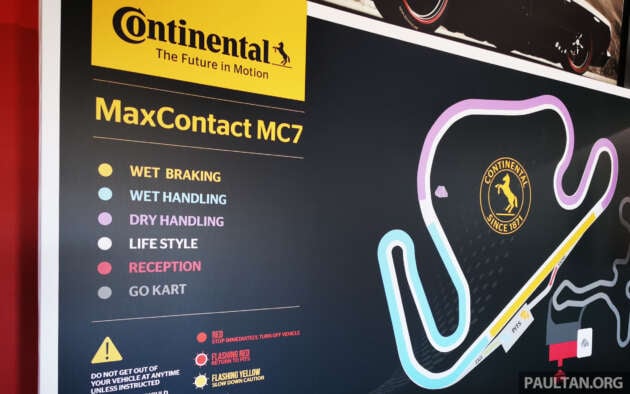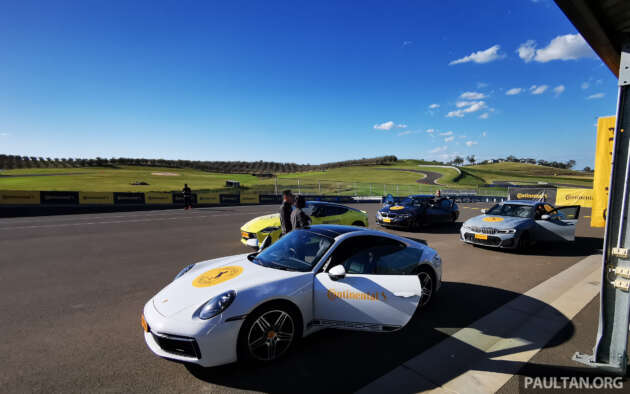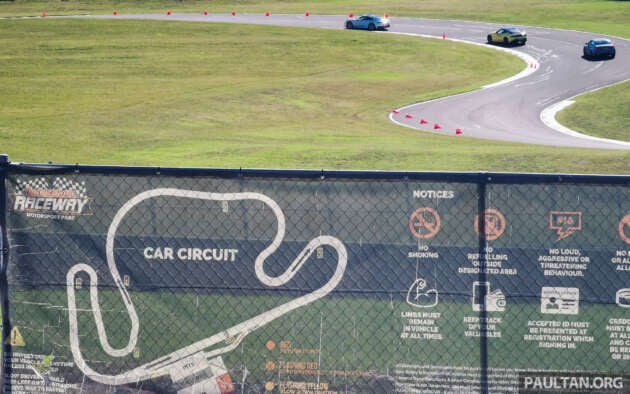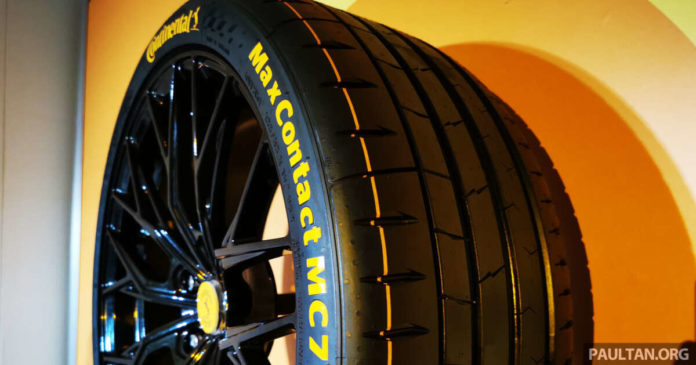Continental Tyre Malaysia (CTM) officially launched the Continental MaxContact 7 MC7 tyre for the Malaysian market in April this year, bringing its successor to the MaxContact MC6 to market in sizes ranging from 16 to 21 inches in diameter.
As part of the German brand’s Generation 7 range of products, improvements to the model in the guise of the MaxContact MC7 – relative to the MaxContact MC6 – are made in the areas of dry handling, dry braking, wet braking, noise and fuel efficiency, while matching its predecessor in areas of wear mileage and wet handling.
To that end, the stated improvements for the MaxContact MC7 are improved steering precision and road surface feedback, shorter braking distances in both wet and dry conditions, and reduced noise levels for a tyre relative to its predecessor.
In order to offer a hands-on experience with the MaxContact MC7 tyre, we have been hosted in Sydney, Australia to sample the brand’s sport-oriented segment of the replacement passenger vehicle tyre market.


The defining aspects of the MaxContact MC7 are expressed as “Sporty C.T.R.L.” , in reference to its Cornering Macroblocks, Two-in-one Noise Breaker 3.0, Reflex compound and Laser-cut 3D sipes.
In terms of roadholding characteristics, the Cornering Macroblocks maximises the tyre’s contact patch to create a wider footprint, and more efficiently distributes forces to other areas of the tyre for optimum handling and stability.
This works hand in hand with the ReFlex Compound, which is crafted for optimum stiffness in order to have a higher level of resistance to tyre deformation, thus yielding improved steering response and precision. The compound also offers an enhanced polymer blend for grip in mild to warm temperatures, and this suits usage in tropical climes such as that of Malaysia.




Improved, shortened braking distances are facilitated by the laser-cut 3D tread sipes, comprised of Star-and-Lightning sipes as well as Aquasipes. These serve to channel water and cut through standing water film from multiple angles and directions, aiding in the effective ejection of water from the main tread grooves.
Completing the quartet of traits is the Noise Breaker 3.0, described as two-in-one in the function of the tyre grooves which not only channel standing water, but which are also made with horizontal ‘humps’ within the main longitudinal grooves to disrupt the homogeneity of the grooves, and thus the continuity of a path for sound waves to propagate which then builds as tyre noise heard by a car’s occupants.
The track segment of the test for the MaxContact MC7 was held at Luddenham Raceway in Luddenham, New South Wales, approximately a 45-minute drive from the Sydney central business district. Luddenham Raceway is an eight-turn, 1.4 km-long circuit that is 10 m in width, with 22 m in elevation change and run clockwise, offering a condensed test for vehicles and components.



Three segments were devised for the track test of the MaxContact MC7; wet braking, wet handling and dry handling. For the wet braking and wet handling sections, the MC7 was compared against a rival tyre, which had its markings obscured, but which was later revealed to be the Bridgestone Potenza S007A.
The first exercise, wet braking, was held on the start/finish straight of the circuit. This was conducted on the G20 BMW 330i sedan, shod in sizes 225/40R19 in front and 255/35R19 at the rear.
We had two runs for each tyre; one for familiarisation, before the second, measured run. Cars would be accelerated to 80km/h at the cone markers, at which point emergency braking force is applied. On the measured runs, the MaxContact MC7 achieved a stopping distance of 21.91 metres, or just over a full metre shorter than that achieved by the rival tyre, at 22.92 metres.


The second exercise was less empirical, though just as revealing, and a comparison with the same rival tyre was also held, also both on G20 BMW 330i sedans. This was held on turn 2 of the circuit, a hairpin downhill right-hander but tested in the opposite direction, making it an uphill left-hander for this exercise.
Starting from the approach kerbing of turn 3, this test was to accelerate into the uphill hairpin left, and lift, but not brake for the turn, which was approached in the region of 55 km/h to 60 km/h. We started with the rival tyre, on which the car was observed to understeer and eventually be gathered by the car’s ESC.
The second run with the MaxContact MC7 in the wet cornering exercise exhibited markedly less understeer, allowing more speed to be carried in reserve, which we found impressive considering the tight radius and wet surface of the turn involved, which can be attributed to the laser-cut 3D tread sipes at work.



The third and final part of the track test session was the dry handling section, in which the G20 330i and Nissan Z were offered for testing on the MaxContact MC7 tyre; there was no rival tyre to be compared with in this exercise. The 992 Porsche 911 Carrera also seen here was for passenger rides only.
Starting out in the 330i sedan after a familiarisation run for the new-to-us section of track, the MC7 exhibited good braking stability in this section, where the dry handling run starts after the turn 5 long right-hander where corner entry into turns 6 and 7 are downhill, which demonstrated the ReFlex compound at work in the braking sections, steadfast even with the greater demands of the Z in a subsequent run.
The dry handling section was also run in the opposite direction, which is thus uphill as it backtracks from turn 7, through to 6 and the slight kink and crest before stopping for the control post midway into the turn 5 sweeper.

If the descent tested braking stability, the climb presented a test of corner exit traction, and in the case of the G20 the perfectly balanced 3 Series remained unflustered, where the MaxContact MC7 appeared to offer the car a surfeit of grip.
The more powerful Nissan Z, with its 405 PS and 475 Nm against the 330i’s 258 PS and 400 Nm, asked more of the MC7 which remained resolute in near-full power corner exits in the dry, the tyre only showing its hand when the Z’s suspension unloads slightly over the crest at wide open throttle, and the MC7 continued to be predictable at the limit of its grip.
On this experience of the Continental MaxContact MC7 in the controlled, repeatable environment of a closed course, the replacement market tyre appears to have demonstrated strong performance in the prescribed areas of dry handling, dry braking, and wet braking, as well as an impressive showing in the wet handling segment of the test.
Looking to sell your car? Sell it with Carro.

